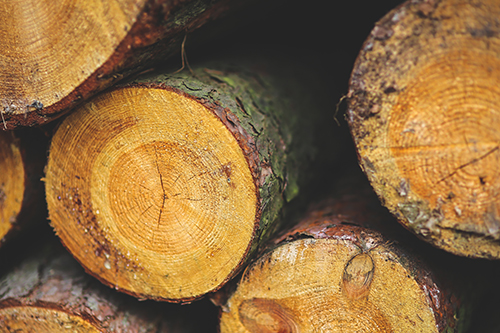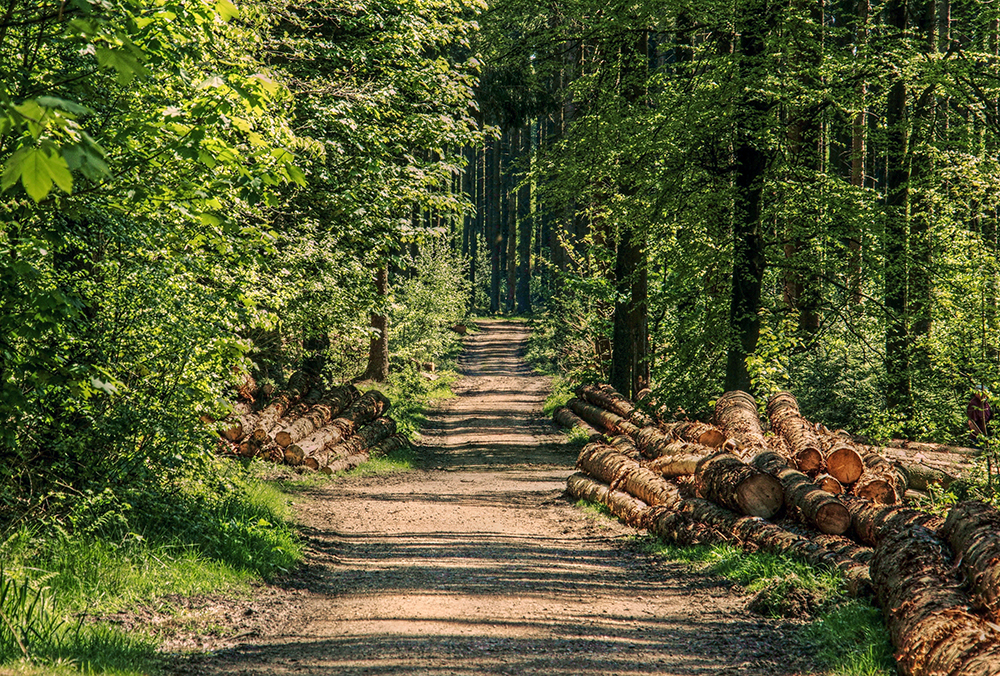
As a private landowner, your trees and your property are your responsibility. Timber is a unique commodity, in that it is only sold once or twice in a lifetime. With only a few times to make a sale, you must have the knowledge and planning to protect your assets and maximize your profits. By following the eight steps outlined, you can ensure a successful and profitable sale.
Steps in Conducting a Successful Timber Sale:
- Determine Your Timber Sale Objectives
- Consult with a Professional Forester
- Perform an Inventory and Appraisal
- Market your Timber with a Sealed Bid Process
- Prepare a Timber Sale Contract
- Follow Forestry Best Management Practices
- Retire the Sale Area
- Remember Tax Considerations
Determine Your Timber Sale Objectives
Your answers to the following questions will guide how the timber sale is conducted.
- Besides income, what ownership objectives do you wish to achieve from the timber sale?
- Are you willing to invest a portion of your timber sale proceeds for the growth of the next forest or to benefit wildlife on your property?
- Do you plan to use the roads and trails for access after the timber sale?
- Can you describe or envision the appearance of your property after the timber sale? How will tree tops, log cutoffs, woody debris and slash be left, treated, or distributed?
- How will you protect water quality in streams and ponds during and after the timber sale?
Additional Resources
Take the Timber Sellers Quiz to determine what might be involved in a timber sale.
Consult with a Professional Forester
The most important step for a private landowner conducting a successful timber sale is to consult with a professional forester. Your local or state forestry department can provide you with management plans, cost-share assistance (if available), forest health assessments, and timber sale information. While their services are free, government foresters are unable to provide timber value estimates and appraisals. For timber value assessments, government foresters will refer you to professional consulting foresters who have the knowledge and ability to assist you with every step of the timber sale. Services that a consulting forester can provide include:
- Conduct a pre-harvest inventory: marking, measuring and estimating the volume and value of wood to be harvested.
- Prepare a timber sale contract.
- Aid with special permitting and timber tax implications.
- Lay out skid trails, log landing sites and water crossings.
- Show timber to prospective buyers and award contracts through sealed bids.
- Oversee the logging operation.
- Assist with income tax reporting.
- Prepare the site for re-establishing new growth.
Although consulting foresters charge a fee or a percentage of your harvest earnings, this cost is often offset by increased profit secured by the forester who is knowledgeable of the timber markets in the area and the peace of mind that comes with working with an experienced professional.
Additional Resources
To find the contact information for your Tennessee Division of Forestry area forester or to search a list of consulting foresters in the state, visit the links below.
Perform an Inventory and Appraisal
The fair market value of your timber can be established by determining the volume, quality and species on your land. A professional forester can help you decide which trees to sell based on your ownership objectives, maturity of the trees, and available markets. The forester can inventory your timber and provide an estimate of the amount of timber available to sell. This estimate can attract potential buyers and ensure you receive a fair price.
Additional Resources
- Conducting a Simple Timber Inventory:
Information on how a forest inventory is conducted - What Factors Affect Stumpage Prices in Tennessee?:
Information on factors that determine the value of your timber
Market Your Timber with a Sealed Bid Process
In a sealed bid process, your forester will prepare an invitation to bid on your timber. This invitation will be sent to numerous potential buyers, who will be given the opportunity to examine your timber within a specified time frame and submit a sealed bid to buy the timber. This process affords you the most control because a guaranteed payment can be contracted before any timber is harvested.
Additional Resources
Timber Sale Sealed Bidding Process Video
For a complete overview of marketing your timber, see the UT Extension Publication, “Marketing Timber in Tennessee”
Prepare a Timber Sale Contract
After selecting a buyer for your timber, a contract must be prepared. A written timber sale contract provides a legally binding document to protect both you (the seller) and the buyer. A professional forester can help you create a timber sale contract specific to your objectives and situation.
Additional Resources
The following information provides a complete discussion of timber sale contracts with a description of both essential and optional items to include in the contract:
Follow Forestry Best Management Practices
Now that you have signed an agreed-upon timber sale contract, the buyer can begin harvest operations. As a landowner, you can ensure the long-term health of your property by letting the buyer and logging crew know that protecting water quality and preventing soil erosion is important to you. This can be accomplished through the use of Best Management Practices (BMPs). As outlined in the Tennessee Division of Forestry’s Guide to Forestry Best Management Practices in Tennessee, BMPs “are practical guidelines that can be used to lessen the environmental impact of forest management activities such as the construction of roads, skid trails and log landings.” To ensure BMP’s are being followed, you should have your forester inspect the logging site before harvesting begins, periodically during harvesting and again upon completion of the operation. Professional foresters and loggers who have completed the Tennessee Master Logger Program will be well-versed in implementation of BMPs. A list of master loggers in Tennessee can be found on the Tennessee Forestry Association website.
Additional Resources
Guide to Forestry Best Management Practices in Tennessee Video: A Landowner’s Introduction to BMPs
Retire the Sale Area
Well before the harvest, your forester should help you develop a regeneration plan to ensure your land remains productive after the harvest. Planted seedlings or natural regeneration from seed, sprouts, or existing seedlings require sunlight and growing space to prosper. To guarantee future forest benefits, it may be wise to reinvest a portion of your timber sale receipts back into the land. Many government cost share programs exist to help offset investments in forest regeneration. Your forester can assist you in finding the most applicable ones. After the harvest, retire the sale area immediately to protect against soil erosion. Skid trails, landings and roads should be water-barred and shaped to ensure proper drainage. Areas sensitive to erosion should be re-vegetated to prevent immediate erosion. The Guide to Forestry Best Management Practices in Tennessee provides guidelines for retiring the sale area. Again, your forester can assist you in successfully completing this step.
Additional Resources
The following PowerPoint slides present examples of practices used in retiring the sale area.
Remember Tax Considerations
Make sure to keep all documents and records relating to the timber sale and to forest management activities and expenditures. This information will provide evidence of credits, deductions, depletion allowances, capital gains taxes and other factors to assist in calculating your income taxes. Your forester should be able to provide you with sound guidance on tax considerations, however, more complex timber sales may require the assistance of a tax professional or tax attorney.
Additional Resources
The following publication introduces how to keep records of your timber for tax purposes:
- Setting up the Books: A Forest Owner’s Guide to Capital Accounts and Record-keeping for Federal Income Tax Purposes
- Income from a Timber Sale is Taxable
- Additional information on timber sales and tax information can be found at www.timbertax.org
Additional Resources
Best Practices for Selling Your Timber: Introduction and overview of practices to follow when selling your timber
Forest*A*Syst: In-depth guide to understanding and managing your forested landn-depth guide to understanding and managing your forested land
The Contract: Video that illustrates the difference between an effective timber sale versus a poorly planned and executed timber sale
Acknowledgements
- Summer Intern Forestry Students: Tyler Gifford, Katie Rimmer, Max Street, Caley Monigan
- Under the direction of Dr. Wayne Clatterbuck, Forestry Professor and Kristy Keel-Blackmon, Communications Specialist

